November 7, 2015 at 6:35 pm
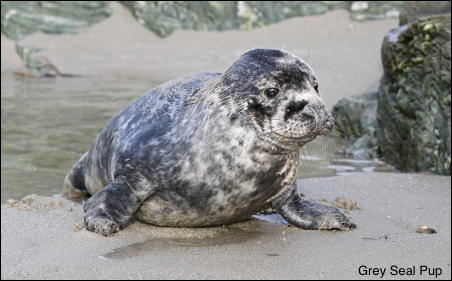
You would have thought that when you visit a place for the 102nd time there would be no surprises awaiting you but you would be wrong. Islay last week was exceptional in what it produced. Firstly we had a fall of Redwings from iceland that was unbelievable in the number of birds involved. This weeks gallery photos were taken alongside a crofters garden. At the same time Whooper Swans were arriving from the same direction and in one day we counted 328 spread across the island. One loch alone held nearly two hundred Swans which was the most we have ever seen on Islay in one place.
We used the acute senses of our Cocker Spaniel to home in on two Grey Seal pups which is more than we have ever found before. A morning on Jura produced three dog Otters within five minutes and then a female with two young later on. These broke our long standing day record of five but even so failed to produce any photos!
The best was yet to come when a walk on a heather moorland at dusk found eight Hen Harriers going to roost. It had always been a dream of mine to find an unknown roost of Hen harriers and it finally happened. How can it ever get better than that?
Oh and in-between all the above we managed to call in virtually every cafe on the island, one of them three times!! Click here for gallery
November 1, 2015 at 8:48 pm
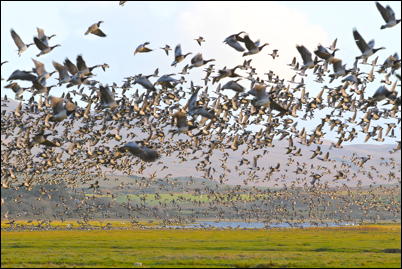
There is little doubt that one of the greatest bird spectacles in Europe in Autumn is watching thousands of Barnacle Geese coming to roost on the sea-lochs of Islay at the end of the day. As they descend to their own chosen spot on the estuary the noise is deafening. With them will be their young of the year having been guided by them from their breeding grounds in north-east Greenland. All these Barnacle Geese are joined on their journey from Iceland by thousands of Whooper Swans who may be spending winter at places like Martin Mere near Southport.
This last week we have been on Islay watching this migration spectacle which also includes hundreds of thousands of Redwings. On the 25th the village of Portnahaven on Islay’s south-west coast had a massive “fall” of Redwings with every garden occupied by birds that had just fallen out of the sky. Within a day these birds had moved on and may soon be in a garden near you.
Geese and Swans comprise the blog and gallery this week which includes our Cocker Spaniel Rusty who had a ball of a time on Islay’s beaches.
click here. More photos next week of a truly special place.
October 25, 2015 at 8:39 pm
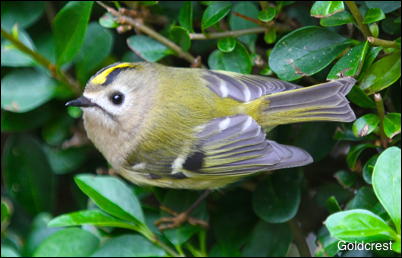
Every Autumn Britain is invaded by millions of Goldcrests from the forests of Scandinavia Some feed in our garden and have to run the gauntlet with our now resident juvenile male Sparrowhawk. He is a clever predator and now knows that after he flies through the garden any bang means a bird has hit our window and may lie stunned on the ground making easy pickings for him. This is what happened this week except that the Goldcrest involved made it to the hedge and escaped his clutches. While it recovered I was able to approach it and take some photos. See Gallery for Goldcrest and some other garden birds. Click here
So far this autumn I have only seen one Fieldfare locally – where are they? On the 24th at four in the morning a Tawny Owl was watched in our garden pine as it eyeballed the ground watching for mice that were feeding on what the birds had left behind during the day.
October 18, 2015 at 7:12 pm
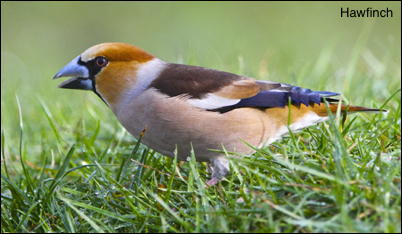
Every autumn is different in the amount of fruit produced by our hedgerow trees and with the exception of one or two tree species this years crop is quite poor. The main exception has been the hazel which has produced a very heavy crop of hazel nuts which should keep our Squirrels happy. The fruit of one particular tree, the Hornbeam, is eaten almost exclusively by one of our most illusive birds the Hawfinch. With their incredible bills they are the only bird species able to reach the kernels. This weeks gallery includes photos of male and female Hawfinches feeding on the ground taken a couple of years ago. Sadly it has recently been proved that most hawfinch nests are predated by Jays and as a result there are less than a thousand pairs left in Britain so these photos may be the last I ever take of an incredible bird species. Click here
With the recent east winds Redwings are now arriving in good numbers with my biggest flock so far being fifteen. Other birds are on the move with a female Stonechat present along a local hedgerow on the 17th.
In the garden the House Sparrows have peaked at seventeen with eight Long Tailed Tits moving through on the 16th. So far this month no Bullfinches have fed in the garden so hopefully they are still in the woods eating all those blackberries .
October 11, 2015 at 4:29 pm
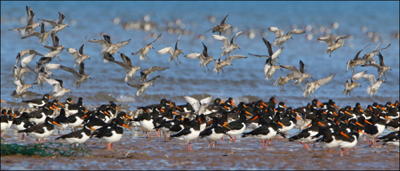
With the perfect weather of the last few weeks I decided to visit Southport to search for waders. Although a long way off and continually disturbed by dog walkers I did manage some distant photos. One of the Sanderling had colour rings on its legs and a green marker so I shall have to find out where this bird was captured – perhaps on its breeding grounds in Greenland or even further afield. Click here
On Hopwood during the week was a flock of more than forty Siskins happily feeding away in the Alders and Birches. I finally saw my first Redwings of winter on the 9th October, at dusk, when a group of eight flew over a friends garden in Cheshire.
October 4, 2015 at 7:22 pm
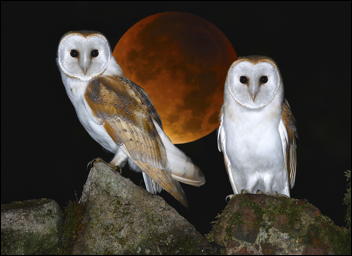
Last week-end produced the most superb eclipse of the moon you could ever wish to see. I was up for two hours to capture the event and coupled with two local Rochdale Barn Owls it created the perfect pictures. If you missed it then you only have another 18 years to the next one – can’t wait – I wonder what cameras we will be using then?
We have just had the finest spell of Autumn weather I can ever remember with sunshine and temperatures most days of 20 Centigrade or more. It has had a tremendous effect on butterflies with only my second ever Wall butterfly appearing on the 2nd October – a month later than expected. Seven Small Tortoiseshell were together on the 2nd Oct with 6 Speckled Woods on the 1st in Hopwood woods. Even a single Green Veined was in flight on the 1st October.
The exceptional warmth has also had an effect on the Pennine Adders with two females still basking in the sunshine on the 2nd October – my first ever October sighting of an Adder. Better still two young Adders were also present during the week, these being only the second ones I have ever seen.Click here for gallery photos







